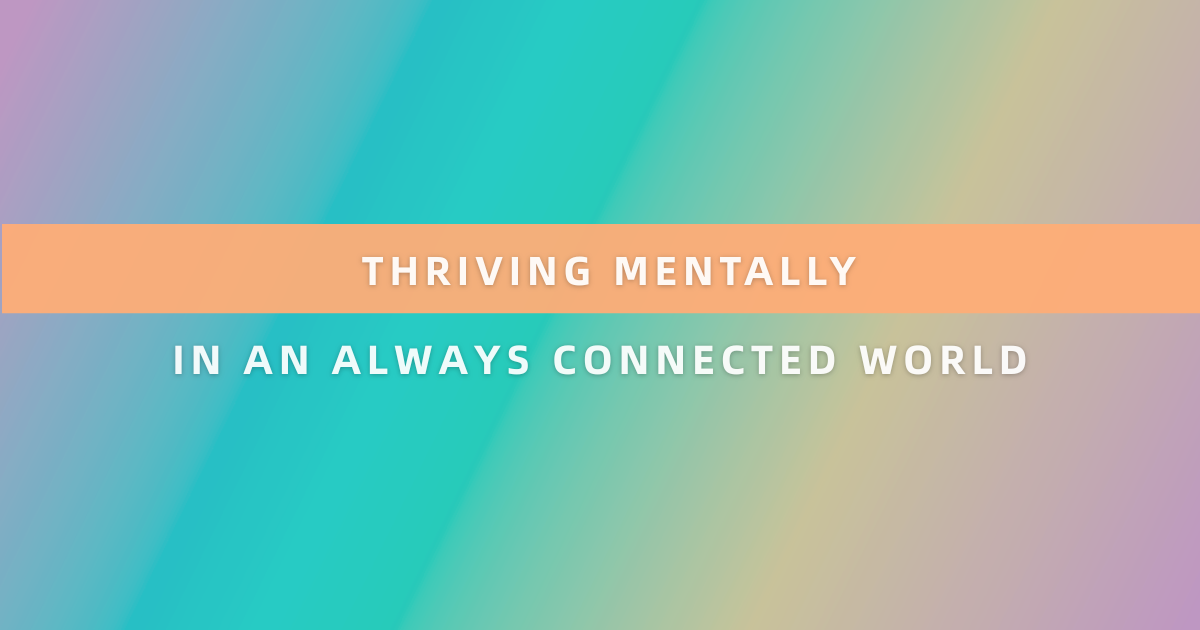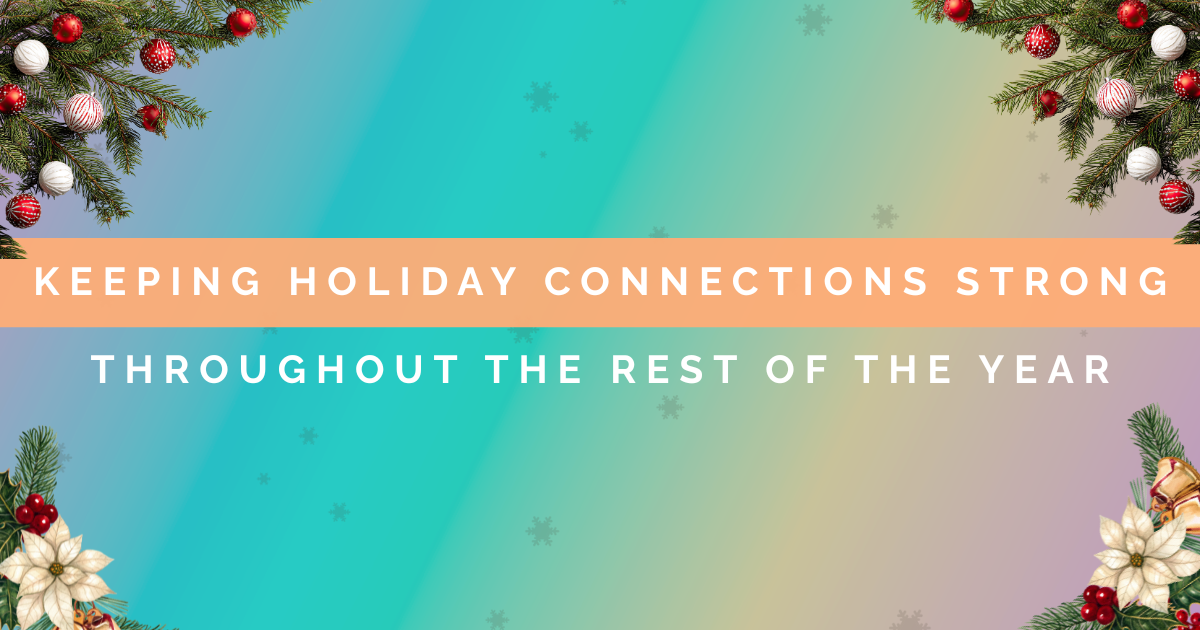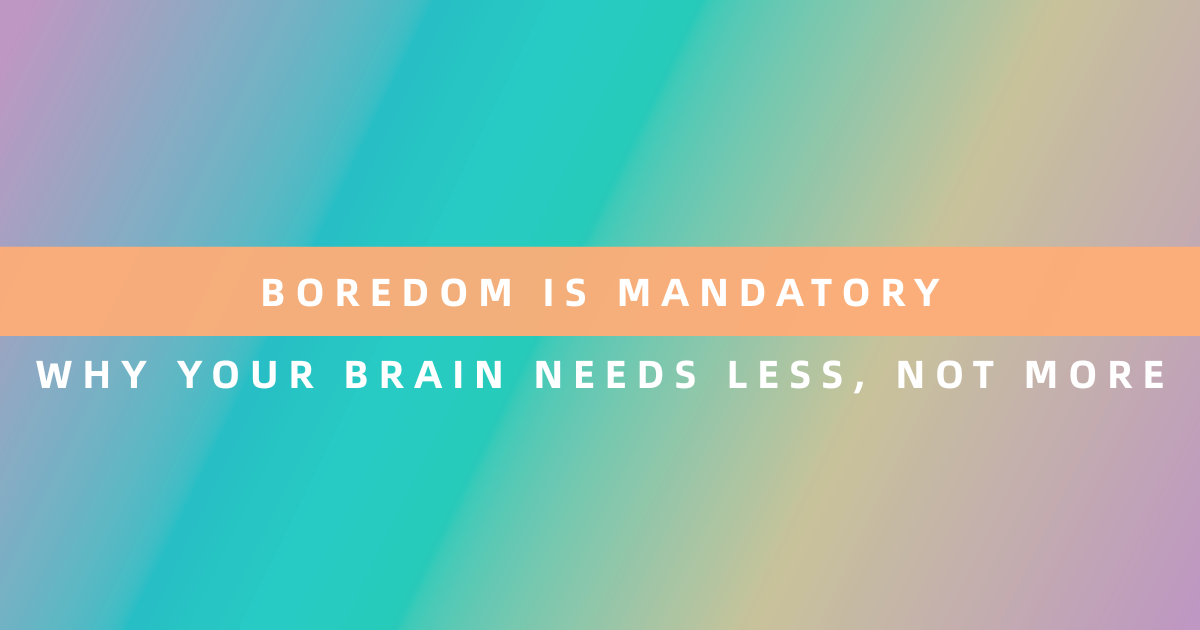Three different messaging apps demand immediate responses. Meanwhile, your smartwatch reminds you to breathe while simultaneously alerting you to breaking news, social media updates, and an upcoming video call in five minutes.
This is modern life: a constant stream of digital demands that never sleeps, never pauses, and never seems satisfied, no matter how quickly we respond.
The Reality of Perpetual Connectivity
We live in an unprecedented era of connection. The average person checks their phone 96 times daily, spends over seven hours looking at screens, and receives 121 emails per day. This constant connectivity promised to make life easier, more efficient, and better connected. Instead, many people report feeling more anxious, isolated, and overwhelmed than ever before.
The human brain wasn’t designed for this level of constant stimulation. Our ancestors faced immediate, tangible challenges: finding food, avoiding predators, and constructing shelter. Today’s threats arrive as endless pings, each one triggering the same stress response originally meant for survival situations. The result? A population experiencing chronic stress from sources that never physically threaten us but psychologically exhaust us.
Research reveals the mental health impact of our always-connected culture:
- – 71% of Americans feel they need to “detox” from technology
- – Anxiety rates have increased 20% since smartphones became ubiquitous
- – “Technostress” now appears in medical literature as a recognized condition
- – Sleep quality has declined dramatically, with blue light and late-night scrolling being major culprits
- – Attention spans have shortened from 12 seconds to 8 seconds in the past two decades
Yet complete disconnection isn’t realistic or even desirable for most people. Work requires digital communication. Families stay connected through video calls. Important information, resources, and communities exist online. The challenge isn’t choosing between connection and wellness but finding ways to thrive within our connected reality.
Understanding Digital Overwhelm
Before addressing solutions, understanding why constant connectivity profoundly affects mental health is crucial. Several factors create the perfect storm of digital stress:
The Dopamine Loop. Every notification triggers a small dopamine release, creating an addictive cycle. Platforms deliberately design features to maximize this effect: variable reward schedules (you never know when something interesting will appear), social validation through likes and comments, and fear of missing out that keeps us constantly checking.
Cognitive Overload: The human brain has limited processing capacity. Constant task switching between emails, messages, and notifications creates mental fatigue. Studies show that even brief interruptions can take 23 minutes to fully refocus, yet most people experience interruptions every 11 minutes.
Comparison Culture Social media presents curated highlights of others’ lives, creating unrealistic standards and constant comparison. This phenomenon contributes to increased rates of depression, especially among young adults who spend more time on image-focused platforms.
Boundary Erosion Technology blurs the lines between work and personal life, public and private spaces, productive time and rest. When your office exists in your pocket, when friends expect immediate responses, when news alerts interrupt dinner, establishing healthy boundaries becomes increasingly challenging.
Information Overload Never before have humans had access to so much information. While knowledge empowers, the constant stream of news, updates, and content creates anxiety about staying informed, making decisions, and processing contradictory information.
Creating Digital Boundaries That Stick
Thriving in an always-connected world requires intentional boundary setting. These aren’t rigid rules but flexible guidelines that protect mental health while maintaining necessary connections:
Time-Based Boundaries
Morning Protection: Many people reach for phones immediately upon waking, flooding their brains with information before full consciousness. Instead:
- – Keep phones charging outside bedrooms
- – Use analog alarm clocks
- – Establish a “no screens for 30 minutes” morning rule
- – Create morning routines that prioritize mental wellness
Evening Wind Down Quality sleep directly impacts mental health, yet screens interfere with natural sleep cycles:
- – Set a “digital sunset” time when devices go off
- – Use blue light filters after dark
- – Replace scrolling with reading, journaling, or gentle stretching
- – Create charging stations away from relaxation spaces
Scheduled Check Ins Rather than constantly monitoring devices:
- – Designate specific times for email and messages
- – Use “Do Not Disturb” modes during focused work
- – Batch similar digital tasks together
- – Communicate your availability patterns to others
Space-Based Boundaries
Tech Free Zones: Designate physical spaces where technology doesn’t intrude:
- – Bedrooms become sanctuaries for sleep and intimacy
- – Dining tables foster device-free conversations
- – Bathrooms remain private spaces without phones
- – Nature walks happen without constant photography
Digital Organization: A cluttered digital space creates mental clutter:
- – Organize apps by purpose, not convenience
- – Remove social media from home screens
- – Unsubscribe from unnecessary emails
- – Use folders to manage digital files efficiently
Mindful Technology Use
Beyond boundaries, developing mindful relationships with technology transforms how connectivity impacts mental health:
Intentional Engagement
Before picking up a device, pause and ask:
- – What do I hope to accomplish?
- – How long will I spend on this task?
- – Is this the best tool for my current need?
- – How do I want to feel after this interaction?
This simple practice interrupts mindless scrolling and creates purposeful engagement.
Quality Over Quantity
Focus on meaningful digital interactions:
- – Prioritize video calls with loved ones over passive social media
- – Engage in online communities that support your values
- – Use technology to learn and grow rather than just consume
- – Share authentically rather than performing for audiences
Digital Wellness Tools
Paradoxically, technology itself offers solutions. Platforms like Theryo demonstrate how thoughtful digital design supports rather than sabotages mental health. The platform’s features include:
- – AI-powered insights that help identify digital stress patterns
- – Structured journaling that processes online experiences
- – Mood tracking that correlates screen time with emotional states
- – Therapeutic support for developing healthier digital habits
Building Resilience in a Connected World
Thriving mentally requires more than just managing technology use. It demands building resilience that buffers against digital stressors:
Mindfulness Practices
Regular mindfulness strengthens the mental muscles needed to resist digital distractions:
- – Daily meditation, even for five minutes, improves focus
- – Breathing exercises counteract notification anxiety
- – Body scans release physical tension from screen use
- – Mindful walking provides screen-free mental clarity
Real World Connections
Prioritizing in-person relationships counters digital isolation:
- – Schedule regular face-to-face time with friends
- – Join local clubs or activities
- – Practice being fully present in conversations
- – Create shared experiences without documenting everything
Physical Health Foundations
Mental health and physical health intertwine, especially regarding technology use:
- – Regular exercise reduces screen time naturally
- – Proper posture prevents tech-related pain
- – Eye exercises counter screen strain
- – Outdoor time balances indoor screen exposure
Creative Expression
Engaging in creative activities provides fulfilling alternatives to passive consumption:
- – Writing, drawing, or crafting activates different brain regions
- – Musical instruments offer screen-free flow states
- – Cooking becomes a mindful practice
- – Gardening connects you with natural rhythms
Navigating Work in an Always-On Culture
Professional demands often drive constant connectivity. Strategies for maintaining mental health while meeting work obligations include:
Setting Professional Boundaries
- – Communicate response time expectations clearly
- – Use out of office messages even for short breaks
- – Designate “deep work” periods without interruptions
- – Advocate for meeting free time blocks
Efficient Digital Workflows
- – Master keyboard shortcuts to reduce screen time
- – Use templates for common communications
- – Automate repetitive tasks where possible
- – Batch similar activities together
Workplace Wellness Advocacy
- – Propose digital wellness initiatives
- – Model healthy technology use
- – Share successful boundary-setting strategies
- – Support colleagues’ efforts to disconnect
The Path Forward: Integration Not Elimination
The goal isn’t to reject technology but to integrate it thoughtfully into a mentally healthy life. This means:
Conscious Choice Making
Every digital interaction represents a choice. Making these choices consciously rather than habitually transforms your relationship with technology. Track your digital habits for a week, then intentionally design how you want to engage going forward.
Regular Digital Detoxes
Schedule regular breaks from connectivity:
- Daily: One hour of complete disconnection
- Weekly: Half-day digital sabbaths
- Monthly: Full day without screens
- Annually: Multi-day retreats or vacations offline
Continuous Adjustment
Digital wellness isn’t a destination but an ongoing practice. As technology evolves and life circumstances change, regularly reassess and adjust your approach. What works during busy periods might differ from slower seasons.
Your Next Step Toward Digital Wellness
Starting your journey toward thriving in an always-connected world begins with one small change. Choose a single practice from this guide that resonates with your current challenges. Maybe it’s keeping your phone out of the bedroom, scheduling specific email times, or trying a meditation app.
Consider how mental health platforms designed for our digital age can support your journey. Theryo offers a unique approach by using AI technology to help you understand your digital patterns and their impact on mental wellness. The platform’s collaborative features connect you with professional support while building sustainable practices for modern life.
Remember, you don’t have to navigate this always-connected world alone. Whether through professional therapy, supportive communities, or innovative platforms that bridge technology and wellness, help exists for creating a mentally healthy relationship with our digital world.
The constant connectivity that challenges our mental health isn’t going away. But with intentional practices, proper boundaries, and the right support tools, we can transform from digital survivors to digital thrivers. Your mental health deserves the same attention you give your notifications. It’s time to make that shift.
Frequently Asked Questions
Q: Is it realistic to disconnect completely in today’s world?
Complete disconnection isn’t necessary or practical for most people. The goal is conscious, balanced use rather than elimination. Focus on creating boundaries that work for your lifestyle while protecting mental health. Even small changes, such as phone-free meals or morning routines without screens, can make significant differences.
Q: How can I maintain digital boundaries when my job requires constant availability? Start by clarifying actual versus perceived availability requirements. Many professionals discover their workplace accepts reasonable boundaries when communicated clearly. Negotiate response time expectations, use status messages to indicate focused work periods, and demonstrate how boundaries improve your productivity and work quality.
Q: What role can technology play in improving mental health in our connected world? When designed thoughtfully, technology supports mental wellness. Platforms like Theryo use AI to provide personalized insights, track mood patterns, and connect users with professional support. The key is choosing tools that enhance well-being rather than exploit attention.
Q: How do I help my family develop healthier digital habits?
Model the behavior you want to see. Create family agreements about technology use, establish tech-free times and zones together, and engage in alternative activities everyone enjoys. Make it collaborative rather than punitive, focusing on what you gain (connection, presence) rather than what you’re restricting.
Q: Can digital wellness practices help with anxiety and depression?
Research shows that mindful technology use significantly impacts mental health. Reducing screen time, especially before bed, improves sleep quality, which affects mood. Limiting social media decreases comparison-based anxiety. However, these practices supplement rather than replace professional treatment for clinical conditions.
Q: How long does it take to break phone addiction habits?
Habit change varies by individual, but research suggests 21 to 66 days for new behaviors to feel automatic. Start with small, sustainable changes rather than dramatic restrictions. Track your progress using apps or journals, and be patient with setbacks. Focus on progress, not perfection.
Q: What are the signs that technology is negatively impacting my mental health? Warning signs include anxiety when separated from devices, difficulty sleeping after screen use, feeling worse after social media sessions, physical symptoms like headaches or eye strain, decreased attention span, preferring online interactions to in-person connections, and constant feelings of being overwhelmed by digital demands.
Q: How can I stay informed without experiencing news anxiety?
Set specific times for news consumption rather than constant monitoring. Choose quality sources over quantity, limit exposure to breaking news alerts, and balance negative news with positive content. Consider weekly news roundups instead of daily updates. Use Theryo’s journaling features to process news-related anxiety constructively.
Q: What’s the difference between healthy and unhealthy technology use?
Healthy use feels intentional and enhances life: connecting with loved ones, learning new skills, or accessing mental health support. Unhealthy use feels compulsive and detracts from well-being: endless scrolling, constant comparison, or avoiding real-world responsibilities. The same platform can be either, depending on how you engage.
Q: How do I handle FOMO (Fear of Missing Out) when I disconnect?
Recognize that FOMO stems from anxiety, not missing out. Practice JOMO (Joy of Missing Out) by focusing on what you gain from disconnection: presence, peace, and deeper connections. Remember that truly important information will reach you through multiple channels. Quality of experience matters more than quantity.
Q: Can children develop healthy relationships with technology in an always-connected world?
Yes, with intentional guidance. Teach children about technology as a tool rather than entertainment. Model balanced use, create age-appropriate boundaries, engage with their digital interests, and maintain open conversations about online experiences. Focus on building real-world skills and relationships alongside digital literacy.







